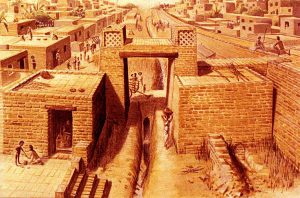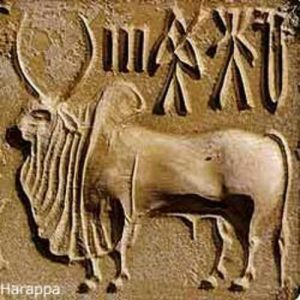Some ancient civilizations were renowned for their warfare techniques—the Chinese’s scale being evident with the discovery of the Terra Cotta Army, the Persians emerging as a military power under Cyrus the Great, and the Romans being famed for their discipline and innovation on the battle field. One civilization, however, might not have engaged in warfare at all, archaeologists speculate.
This is the Harappan civilization that inhabited the Indus River valley some 5,000 years ago. Surviving for about two millennia, it is believed that this society survived without any major wars or conflicts, and is known to be one of the only ancient cities to do so. Archaeologists have never uncovered any signs of ash (indicating whether the city had ever been burned), weaponry, or even of an army itself.
What makes this especially profound is the prominence of army monuments in civilizations surrounding the Indus River Valley, such as those found in Mesopotamia. However, the fact that the Harappan society shows no traces of an army might be contingent on the fact that these were fairly migrant people. Through the analyzation of teeth found in burial grounds in Mohenjo-Daro (the largest city of the Harappan people), archaeologists discovered that many drank water from a source other than the immediate region, suggesting many people came and went from the city often.
Then what were the Harappan people so focused on besides warfare? Artifacts show that these people were very involved in the art of writing and even science. Markings on pottery show the transition from crude inscriptions to an extensive alphabet, and Harappan cities showcase a firm understanding of engineering, with urban areas built along strict grids and the standardization of bricks essential in the building of their structures.
So what was the Harappan’s demise, then, if it didn’t engage itself in warfare? Many speculate that rather than a quintessential “fall” within the society, it simply turned into a more nomadic group. This could have been caused by the arrival of the Aryan people in the area. Others suggest that the Harappan people simply shifted away from an urban, mercantile society, and instead adopted a more agricultural lifestyle, eventually merging with the Vedic culture of South Asia.
Whether or not this society was actually void of warfare is not entirely for certain, but through the use of culture history, more truths are slowly being discovered.
Additional reading:
http://archaeologyonline.net/artifacts/harappa-mohenjodaro
https://www.harappa.com/har/indus-saraswati.html
Sources:
https://io9.gizmodo.com/a-civilization-without-war-1595540812
https://www.britannica.com/topic/Indus-civilization
http://thediplomat.com/2015/04/exploring-the-indus-valleys-secrets/
Pictures:
http://cdn.sci-news.com/images/enlarge/image_1705_1e-Harappa.jpg
http://transmissionsmedia.com/wp-content/uploads/2012/11/marsn-6.jpg



what are the clues lead to the idea that individuals moved from an urban metropolis to a nomadic life? are there archaeological sites that show this move/ are there cities near by that could have been where individuals moved to? how similar is the language surrounding the fall of Harappan to the fall of the Mayan empire?
The transition of the Harappan people is less of a chosen decision than it was a gradual change within the already existing cities. When the civilization began declining at around 2000 BC, the Aryans, a group of warrior nomads, migrated into Harappan cities, and gradually began integrating their nomadic lifestyle with the urban one already in place. Thus, eventually, leading to the creation of a new culture. This also means that archaeological sites showing the transition are practically nonexistent, considering that the change happened within the already existing cities.
As for the similarities in the collapses of the Harappan civilization and the Mayan Empire, there are several. For starters, the explanation for the fall of both these civilization is multivariate, meaning multiple factors attributed to their decline. Among these, for both civilizations are climate change, disease, and a deterioration of infrastructure.